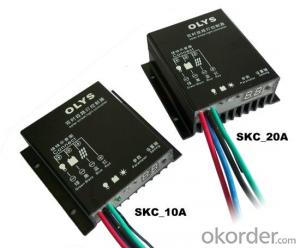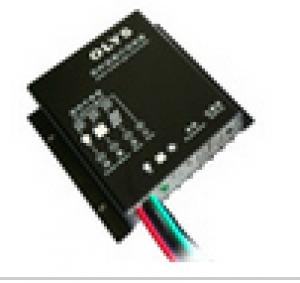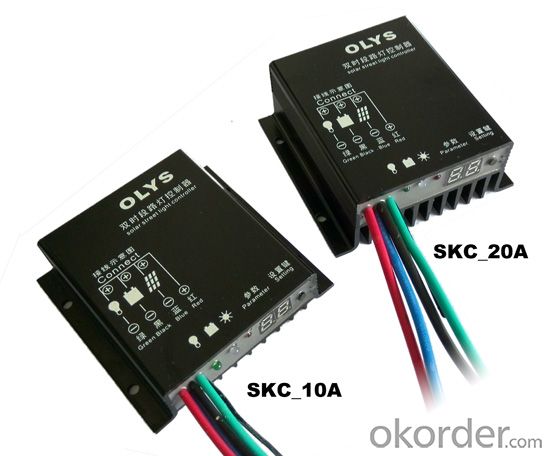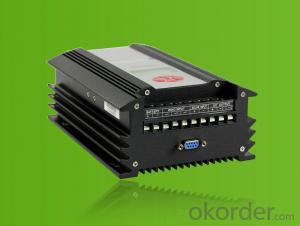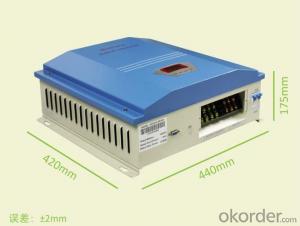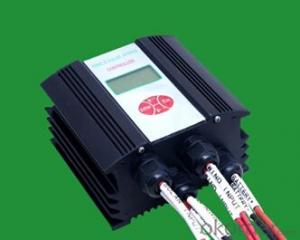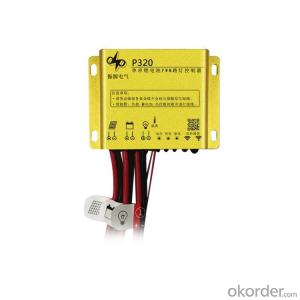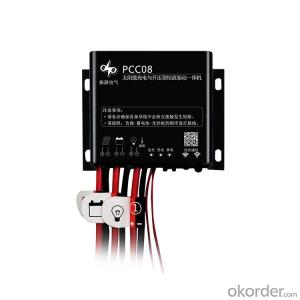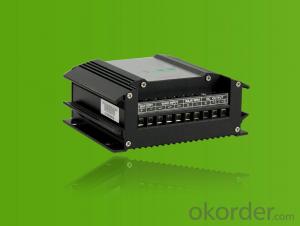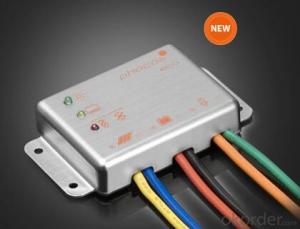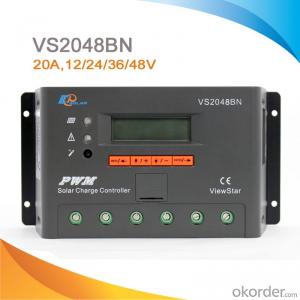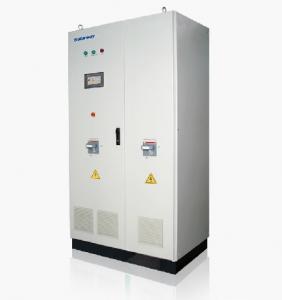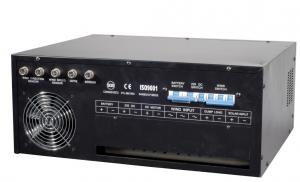Solar Load Controllers - Solar Street Light Controller with Two Time Setting + PWM
- Loading Port:
- Shekou
- Payment Terms:
- TT OR LC
- Min Order Qty:
- 100 unit
- Supply Capability:
- 100000 unit/month
OKorder Service Pledge
OKorder Financial Service
You Might Also Like
(1)adopt advanced MCU design, conforming PWM charging controlling technology, with strong reliability and anti-disturb capability.
(2)Adopt solar energy as power source without waste of regular energy.
(3)Perfect protective and temperature compensate function to prevent the battery from over voltage or shortvoltage.
(4)With perfect capability, to protect acid battery from over discharge
(5)It can restart electrodeless lamp, the controller can restart itself to make sure electrdeless lamp under normal working status when electrodeless lamp is not able to turn on
(6)work under diferent surroundings.
(7)Memory function: startup load mode and main circuit’s working time can be reached by setting with outer keys. After setting, the time will be saved in memorizer. The data will not disappear even battery is disconnected with controller.
Technical parameter
MODEL SKC05 SKC10 SKC15 SKC20
Max.solar panel current 5A 10A 15A 20A
Max.load current 5A 10A 15A 20A
Use voltage 12V/24V,automatic recognition
No-load current ≤6 mA
Overvoltage protection of battery 17V(12V), 34V/24V;
Ambient temperature range: -35℃--+55℃
Boost voltage 14.6V(12V), 29.2V/(24V)
Equalization voltage 14.4V(12V), 28.8/(24V)
Float voltage 13.6V(12V), 27.2V/(24V)
Recharge voltage 13.2V(12V); 26.4/(24V);
Temperature compensation 5mv/℃/2V
Undervoltage of battery 12V(12V); 24V/(24V)
Low voltage disconnect 11V(12V); 22/24V;
Load reconnect voltage 12.6V(12V), 25.2/(24V)
Charge control mode PWM
- Q: What is the self-consumption of a solar controller?
- The self-consumption of a solar controller refers to the amount of energy that the controller itself consumes to operate. This energy consumption is separate from the energy generated by the solar panels it controls.
- Q: Can a solar controller be used with solar-powered air quality monitoring stations?
- Yes, a solar controller can be used with solar-powered air quality monitoring stations. A solar controller is an essential component in a solar power system as it regulates the flow of electricity from the solar panels to the monitoring station and also prevents overcharging of batteries. In the case of solar-powered air quality monitoring stations, the solar controller would connect the solar panels to the station's power system, ensuring a steady supply of clean energy to operate the sensors, data loggers, and other components. This setup allows for continuous and sustainable monitoring of air quality, without relying on grid power or frequent battery replacement. Therefore, using a solar controller is highly recommended for solar-powered air quality monitoring stations to optimize their performance and ensure reliable operation.
- Q: How do I calculate the required solar panel capacity for a solar controller?
- To calculate the required solar panel capacity for a solar controller, you need to consider several factors: 1. Determine your energy needs: Firstly, you need to determine the amount of energy you require to power your devices or appliances. This can be done by calculating the total wattage of all the devices you wish to run on solar power. 2. Estimate daily energy consumption: Next, estimate your daily energy consumption by multiplying the wattage of each device by the number of hours you expect to use it. Add up these values to get your total daily energy consumption in watt-hours (Wh). 3. Account for efficiency and losses: Solar panels do not convert 100% of the sunlight they receive into usable electricity. To account for efficiency and losses, multiply your total daily energy consumption (in Wh) by a factor of 1.25 to 1.5, depending on the efficiency of your solar panels and system. 4. Account for location and climate: The amount of sunlight available varies depending on your location and climate. Consider the average daily sunlight hours in your area to estimate the daily energy production of your solar panels. Multiply your adjusted daily energy consumption (from step 3) by 1.25 to 1.5 to account for the location and climate factors. 5. Calculate panel capacity: Finally, divide the adjusted daily energy consumption (from step 4) by the average daily energy production of a solar panel. This will give you the required solar panel capacity in watts (W) or kilowatts (kW). It's important to note that this calculation provides an estimate and it's recommended to consult with a solar professional or use online solar calculators for more accurate results. Additionally, consider factors like future energy needs, system expansion, and storage capacity if you plan to incorporate battery systems.
- Q: How does a solar controller handle variations in solar panel soiling?
- A solar controller does not directly handle variations in solar panel soiling. Its primary function is to regulate the charge and discharge of the battery connected to the solar panel system. However, it indirectly helps mitigate the effects of soiling by optimizing the performance of the solar panels. By monitoring the voltage and current produced by the panels, the controller ensures that the maximum power point tracking (MPPT) algorithm is employed, which adjusts the panel's operating conditions to extract the most power possible. This helps compensate for any losses caused by soiling and maintain the overall efficiency of the solar panel system.
- Q: Can a solar controller be used with a solar-powered industrial facility?
- Yes, a solar controller can be used with a solar-powered industrial facility. A solar controller is an essential component of a solar power system as it regulates the flow of electricity from the solar panels to the facility's equipment, ensuring efficient energy usage and preventing overcharging or damage to the batteries. It helps optimize the power generation and distribution process, making it suitable for use in large-scale industrial applications such as factories, warehouses, or manufacturing plants.
- Q: Can a solar controller be used with solar panel RV mounts?
- Yes, a solar controller can be used with solar panel RV mounts. In fact, it is highly recommended to use a solar controller with solar panel RV mounts as it helps regulate the charging process and prevents overcharging of batteries, ensuring optimal performance and longevity of the system.
- Q: Can a solar controller be used with solar panel ground mounts?
- Yes, a solar controller can be used with solar panel ground mounts. A solar controller is designed to regulate and monitor the charging of batteries in a solar power system, and it can be used with any type of solar panel installation, including ground mounts. The controller ensures that the batteries are charged efficiently and protects them from overcharging or damage.
- Q: Can a solar controller handle power surges from appliances?
- No, a solar controller is not designed to handle power surges from appliances. Its primary function is to regulate and control the flow of power between the solar panels and the batteries, ensuring efficient charging and preventing overcharging. To protect appliances from power surges, separate surge protectors or voltage regulators should be used.
- Q: What are the indicators and display features typically found on a solar controller?
- Solar controllers, also known as charge controllers, are essential components in solar power systems that ensure efficient charging and protection of batteries from overcharging or discharging. These controllers are equipped with various indicators and display features that provide crucial information about the system's performance. One common indicator found on solar controllers is the battery status indicator. This indicator shows the current state of charge of the battery, usually represented by a series of LED lights or a voltage reading. It allows users to quickly assess the battery's capacity and determine if it requires charging or if it is fully charged. Another important indicator is the solar input indicator, which displays the amount of solar power being generated by the photovoltaic (PV) panels. This indicator can be presented in Watts or Amps, giving users a real-time understanding of the system's energy production. By monitoring this indicator, users can assess the system's efficiency and identify any potential issues, such as shading or malfunctioning panels. Some solar controllers also feature load or output indicators, which show the amount of power being drawn from the battery to power connected loads. This indicator is particularly useful in off-grid systems, allowing users to manage their energy consumption and prevent overloading the battery. Additionally, many solar controllers are equipped with a digital or analog display that provides detailed information about the system's performance. This display often includes parameters such as battery voltage, charging current, load current, and ambient temperature. These readings enable users to have a comprehensive overview of the system's operation and make informed decisions regarding energy usage and maintenance. Furthermore, advanced solar controllers may include additional display features such as data logging capabilities or communication interfaces. Data logging allows users to analyze historical data and track trends in energy production and consumption, aiding in system optimization. Communication interfaces, such as USB or RS485 ports, enable the controller to connect to external devices or monitoring systems for remote monitoring and control. In summary, the indicators and display features typically found on a solar controller include battery status indicators, solar input indicators, load or output indicators, as well as digital or analog displays showing various system parameters. These features provide users with essential information to monitor and manage their solar power systems effectively.
- Q: Can a solar controller be used with a solar-powered outdoor Wi-Fi system?
- Yes, a solar controller can be used with a solar-powered outdoor Wi-Fi system. A solar controller helps regulate and monitor the charging and discharging of the solar battery, ensuring maximum efficiency and protection. It can be integrated into the system to manage the power supply from the solar panels, providing a reliable and sustainable energy source for the outdoor Wi-Fi system.
Send your message to us
Solar Load Controllers - Solar Street Light Controller with Two Time Setting + PWM
- Loading Port:
- Shekou
- Payment Terms:
- TT OR LC
- Min Order Qty:
- 100 unit
- Supply Capability:
- 100000 unit/month
OKorder Service Pledge
OKorder Financial Service
Similar products
Hot products
Hot Searches
Related keywords
